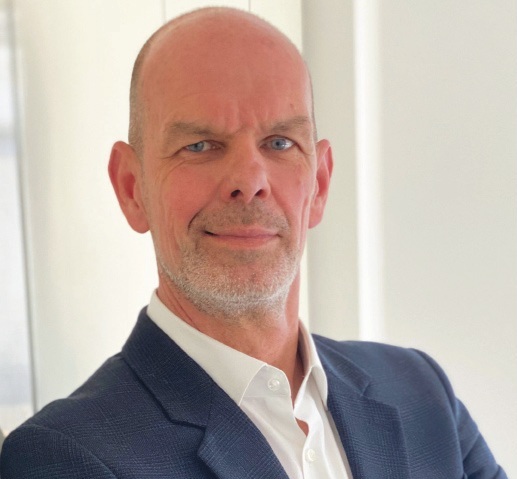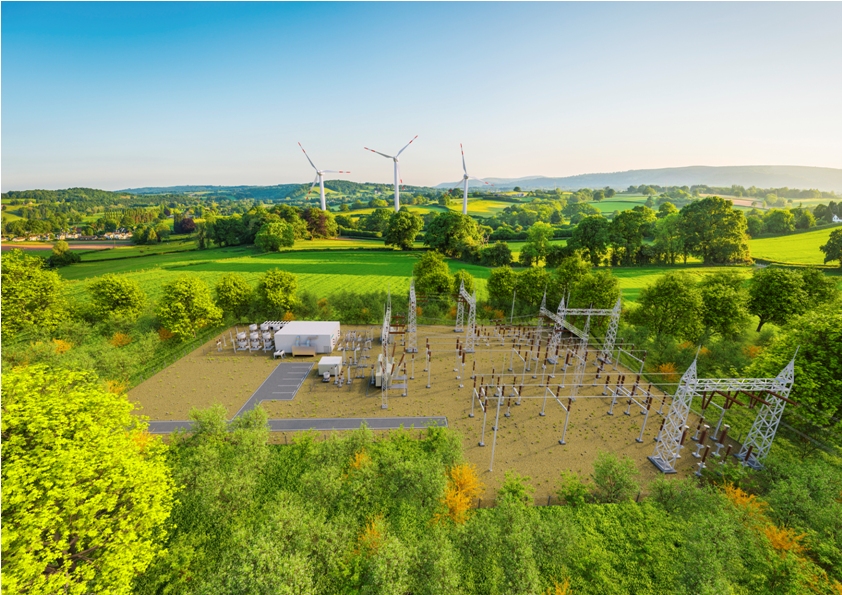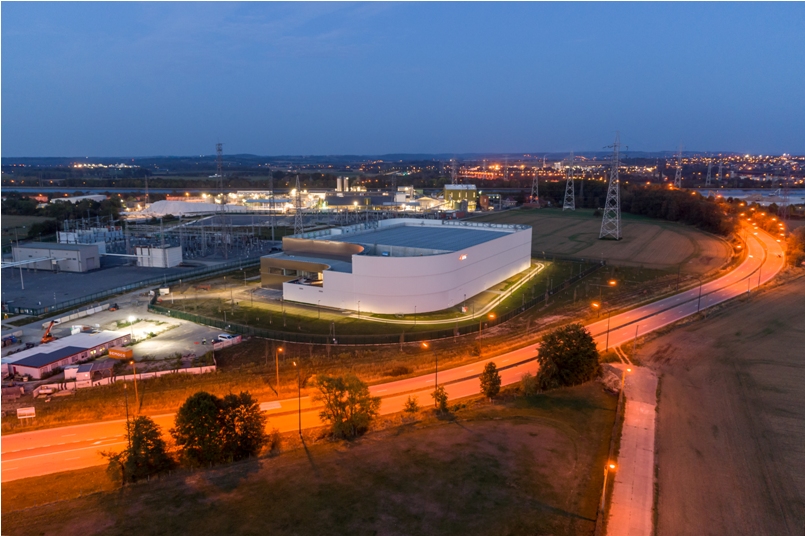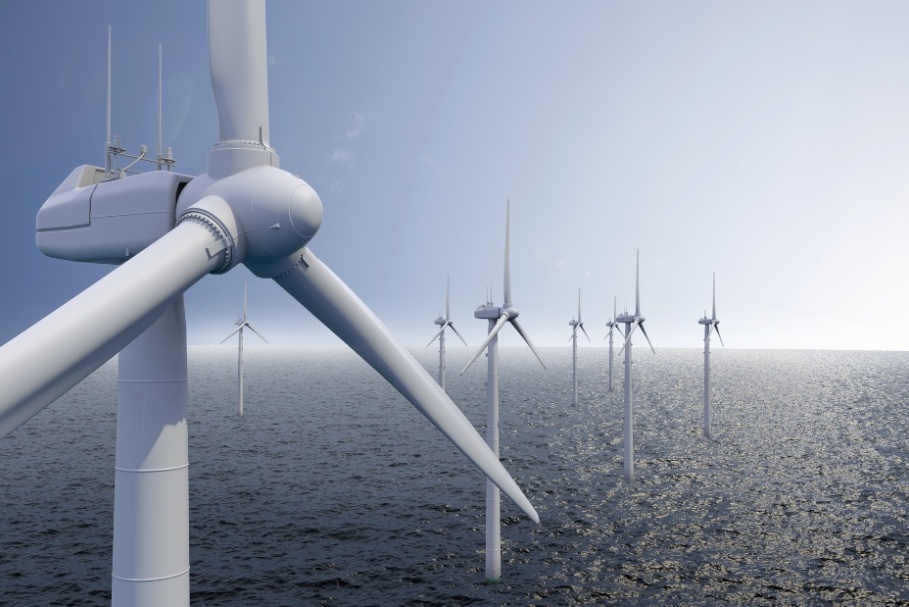A reliable grid is crucial for a successful energy transition: Siemens Energy
- January 13, 2021
 Today’s electrical grid is getting complex, not merely because of the quantum of electricity transmitted but due to other factors like increasing injection of renewable-based energy. The concept of grid stability is gaining significance worldwide, and prominent names like Siemens Energy are in the forefront, supplying innovative grid-stabilization technologies to both developed and developing countries. In this exclusive exchange, we have Hauke Jürgensen, Head of Large Transmission Solutions at Siemens Energy, sharing keen insights into various aspects of grid stability, and its relevance to India. An interview by Venugopal Pillai.
Today’s electrical grid is getting complex, not merely because of the quantum of electricity transmitted but due to other factors like increasing injection of renewable-based energy. The concept of grid stability is gaining significance worldwide, and prominent names like Siemens Energy are in the forefront, supplying innovative grid-stabilization technologies to both developed and developing countries. In this exclusive exchange, we have Hauke Jürgensen, Head of Large Transmission Solutions at Siemens Energy, sharing keen insights into various aspects of grid stability, and its relevance to India. An interview by Venugopal Pillai.
What are the typical causes of instability of a power grid?
We see three global energy trends causing instability of power grids:
Firstly, the increasing power demand; around 770 million people are still living without access to electricity and according to studies and global energy demand continues to grow. This increasing power demand challenges our customers to operate their assets to their limits and beyond, thus stressing the electrical grid and creating repeated overload conditions
.Secondly, we are currently facing a paradigm shift from conventional energy sources and central energy generation systems to renewable energies and decentralized energy supplies. Locations of the best renewable resources, for example offshore wind, are often remote from population centers needing the power. The power flow is changing.
Thirdly, renewables, especially wind and photovoltaic systems, are subject to nature’s unpredictability and thus more power fluctuations compared to conventional power plants.
On top of that, one must keep in mind that many of the electric transmission grids around the world were designed and built decades ago with very different resources in mind than what is fed in today. Reflecting today’s announced policy intentions and targets, the International Energy Agency states that the projected requirement for transmission and grid expansion worldwide is 80 per cent greater over the next decade than the expansion seen over the last ten years.
As backbone of today’s power system, a reliable grid is crucial for a successful energy transition.
“Forced to operate the grid at its limit, grid operators often have to take expensive actions to maintain a reliable power supply.”
In a very general sense, what are the symptoms of an “unstable” grid?
Symptoms of an unstable grid are voltage fluctuations and repeating overload conditions, that can pose serious concerns regarding power quality and can lead to power supply interruptions. Forced to operate the grid at its limit, grid operators often have to take expensive actions to maintain a reliable power supply.

You mentioned that injection of renewable energy into the grid causes it to become unstable. From a technical standpoint, why does this happen?
Fluctuations arising out of the injection of renewable energy like solar or wind power need to be balanced with the help of other power plants which is impacting the power flow and the utilization of grid assets. A stable grid operation requires sufficient short circuit power and inertia which conventional power plants consisting of large turbines and generators are mainly providing for, while inverter-based generation such as wind or solar are hardly contributing to it. The more conventional power plants are replaced with renewables, the more short circuit power and inertia will be missing for fault-ride-through scenarios. Moreover, a stable grid requires the right balance of reactive power which has to be managed. While large conventional power plants can largely manage reactive power themselves, smaller and more decentralized renewable generation will have to actively ensure injection or absorption of reactive power at the point of connection.
Do we presume that issues of grid instability did not cause concern some decades ago when much of the world’s electricity came from conventional (thermal, hydropower, nuclear) power plants?
Grid stabilization was certainly less of a concern when power demand was lower and unidirectional power flow with very predictable load patterns applied.
What are the typical remedies to bring stability to a power grid?
There are different technologies available to stabilize the grid. High-voltage direct current (HVDC) links, for example, allow transporting large amount of power over long distances between power generation and consumption, and can compensate for regional fluctuations in production or consumption.
However, every power grid has specific challenges. Thus, there is a variety of Flexible AC Transmission Systems (FACTS) that can be inserted for individual purposes. Static Synchronous Compensators (STATCOM), for example, stabilize fluctuations very fast by absorbing or feeding in voltage-supporting reactive power, depending on the requirement. Another solution would be synchronous condenser for the provision of short circuit power and inertia, which are both key elements of grid stability.

What are the products and services that Siemens Energy offers towards grid stabilization?
Siemens Energy offers the full scope of HVDC and FACTS devices available in the market. Our global bestsellers include our powerful HVDC PLUS technology based on voltage-sourced converter (VSC) as well as STATCOM. Over the last years we have also seen and served an increasing demand in synchronous condenser solutions.
Recently, we also launched multi-purpose devices like a Unified Power Flow Controller (UPFC), a solution that combines series and parallel compensation to control reactive power and power flow within one solution. Siemens Energy’s UPFC PLUS can be easily integrated into existing infrastructure and represents a cost-efficient solution for increased grid stability.
“Over the last few years there has been a constant demand for HVDC and FACTS technology in Germany.”
Can we presume that new transmission systems incorporate elements towards grid stability and that the grid stabilization projects we hear of are mostly cases of retrofitting?
Most projects in the market are in fact new installations. Especially FACTS devices whose installation does not consume much space, and which allows grid optimization without any larger infrastructure change.
In Siemens Energy’s homeland Germany, there is tremendous thrust on renewable energy, as we appreciate. What is the situation with respect to grid stabilization projects in Germany?
Over the last few years there has been a constant demand for HVDC and FACTS technology in Germany to support the “Energy transition” initiative. Thus, Siemens has accompanied the utilities in Germany for a very long time and has completed several projects with many more under execution. But the need of grid stabilization projects does not apply only to Germany.
With the European Green Deal, the European commission is thriving to make Europe the first climate-neutral continent. Interconnecting energy systems, integrating renewable energy sources to the grid while also keeping it stable, will be crucial action items on the continent’s path towards a decarbonized energy system. In this changing energy landscape, the topic of grid stabilization and resilience will certainly gain in importance.

We learn that HVDC systems are being deployed for evacuation from renewable energy sources (offshore wind farms, for instance). From a technical perspective, does HVDC promote or adversely affect grid stability?
If properly planned and designed, HVDC technology contributes to grid stability. Siemens Energy VSC technology ensures, for example, a fast controllability of transmission systems that means very fast response and power system support in case of system failures (fast voltage/ reactive power support) or demand/supply changes (fast frequency support).
We understand that Siemens Energy has been mandated by Welsh Power for UK’s first grid stabilization project. Do you feel that UK is a big market for similar projects in future?
Amongst other countries, the UK has been a forerunner with regards to increasing the share of renewable energy in the country and focusing on an economic energy mix. To date the UK already has close to 10.4 GW of offshore wind turbines operating and about 23.6 GW of projects in the planning stages. Hence the UK market has been and will continue to be of great interest for both FACTS as well as HVDC technologies.
“Distribution systems in India have huge potential for improvement of power quality through FACTS devices.”
Please cite some major grid stabilization projects that Siemens has undertaken so far, globally?
Worldwide, Siemens Energy has implemented more than 55 HVDC projects and is involved in 13 projects that are currently under construction. The last major project with Siemens Energy HVDC PLUS technology, which has been commissioned, was ALEGrO, the first electricity interconnector linking Germany and Belgium.
To date we have globally commissioned around 750 FACTS projects and about 30 are currently under construction. For STATCOM only, Siemens has commissioned more than 100 installations over the last decade and was the pioneer for multilevel STATCOM. The solution has been applied for the first time in 2008 at the Thanet Wind Farm off the coast of England (then the largest offshore wind farm in the world). More than 20 of our Synchronous Condensers are running, or are under execution.
Which countries/regions hold significant potential for grid stabilization projects? What about India where as much as 175 GW of renewable energy-based installed capacity has been targeted by 2022?
North America and Europe currently hold a lot of potential for grid stabilization projects. In India Siemens has built numerous HVDC and FACTS installations to support the expansion of the power grid and its stable operation. However, we see the need for additional grid stabilization projects in India. Some of these have already been identified and planned by relevant stakeholders in India including Power Grid Corporation of India Ltd (PGCIL).
Distribution systems in India have huge potential for improvement of power quality through FACTS devices which remains completely untapped due to lack of focus and funding issues. We believe that there is a significant need in the parts of the grid operated by state electricity utilities and are happy to raise awareness and support.


